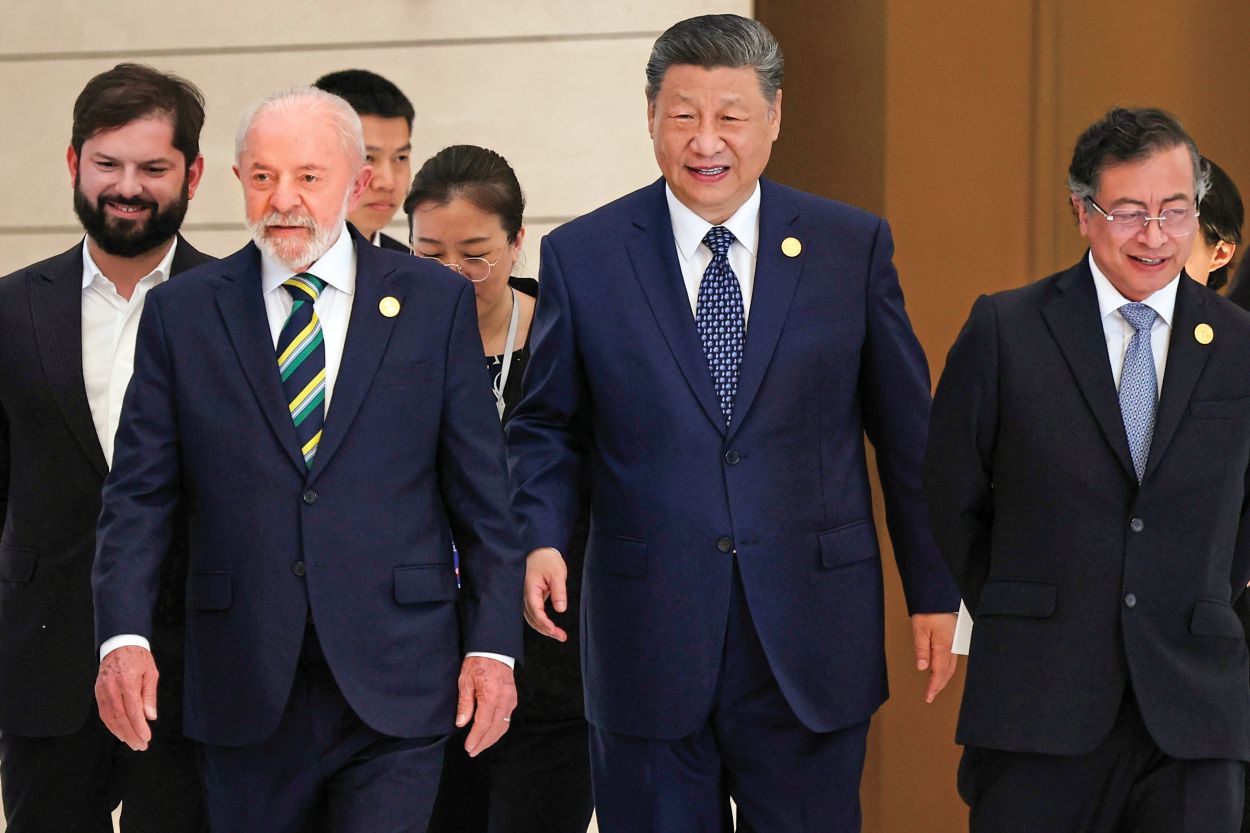India and the Western Hemisphere
India and the Western Hemisphere
A COA panel explored the growing presence of Indian businesses in Latin America, the benefits that the Indian-Latin American relationship can bring to both sides, the role of governments in strengthening economic ties, and obstacles to further linkages.
Speakers:
- Arun Singh, Deputy Chief of Mission of the Embassy of India to the United States
- Jorge Heine, former Ambassador of Chile to India and author of The Other BRIC in Latin America: India
- Eric Farnsworth, Vice President, Council of the Americas (moderator)
Summary
On July 22, Council of the Americas hosted a luncheon discussion on India’s expanding relationship with Latin America. The program focused on the growing presence of Indian businesses in Latin America, the benefits that the Indian-Latin American relationship can bring to both sides, the role of governments in strengthening economic ties, and obstacles to further linkages.
India’s Reach into Latin America
To shed light on this burgeoning relationship, Deputy Chief of Mission of the Embassy of India to the U.S. Arun Singh cited total trade between India and Latin America, which skyrocketed from just over $2 billion in 2001 to $23 billion today. Indian companies have invested $12 billion in the region in sectors such as information technology, mining, pharmaceuticals, agrochemical, and agribusiness. The subcontinent is also looking to Latin America for energy security, as India relies heavily on fossil fuel imports from the politically volatile Gulf States. Indian ventures already exist in Venezuela and firms are now eyeing Brazil’s recent pre-salt discoveries.
While Indian companies operate throughout Latin America, the bulk of activity is in Brazil, which receives more than three times as much Indian investment as Argentina, the second most popular destination for Indian businesses. According to former Ambassador of Chile to India Jorge Heine, Brazil is “the center of the India-Latin America axis,” because of the size of the Brazilian market and India’s participation in the multilateral groups IBSA (India, Brazil, and South Africa) and BRICS (Brazil, Russia, India, China, South Africa). Still, according to Singh, India is interested in fostering ties with all Latin American countries, not just Brazil. He also noted the importance of India’s political relationships with Latin American countries as India emerges as a global power and begins to play a greater role in multilateral organizations.
India’s presence in the region has grown rapidly in recent years, but trade with India is still only a small portion of Latin America’s total trade; heavy Chinese investment often gets more attention than India’s activities. Although the relationship is still in early stages, India has signed a preferential trade agreement with the South American Common Market—or MERCOSUR—countries (Argentina, Brazil, Paraguay, Uruguay) and is well on its way to becoming a major Latin American trade partner.
An Attractive Relationship for Both Sides
Heine maintained that the different strengths and needs of India and Latin America make the relationship “a win-win proposition.” Despite Latin America’s wealth of natural resources, resource extraction is not India’s focus in the region, according to Singh. Indian firms have created thousands of jobs in Latin America across a number of sectors. Latin America’s proximity to the U.S. market makes it a logical location for service centers for Western Hemisphere customers, given India’s time difference. Indian companies are increasingly adopting the “12-by-12 business model,” in which service centers in India operate for twelve hours a day and service centers in the Western Hemisphere operate during the other twelve.
Beyond economic issues, Heine observed the “tremendous attractiveness of Indian culture in Latin America.” Singh noted a recent hit telenovela in Brazil entitled Passage to India, which brought Indian culture to Brazilian viewers. In India, interest in Latin America is also growing. According to Singh, Bollywood producers are beginning to shoot films in Latin America and are even hiring actors from the region.
Obstacles to Trade: Distance, Infrastructure, Language, Tariffs
When asked about the role of governments in overcoming obstacles to trade, Heine said there is a “complementarity” between the public and private sectors. Governments can implement trade agreements and facilitation measures to encourage linkages. Although Indian-Latin American ties are indeed growing, the relationship still faces substantial obstacles. Geographic distance and limited infrastructure in both countries hinder trade. The language barrier is another factor, as Spanish and Portuguese are rarely taught in the polyglot subcontinent that has 22 official languages. Tariffs and labor restrictions on both sides present additional hurdles. Despite these challenges, Heine expressed confidence that India’s considerable rates of economic and demographic growth make this relationship worthwhile. Said Heine: “[B]usiness with India takes some doing…but if you set your mind to it, the sky is the limit.”








